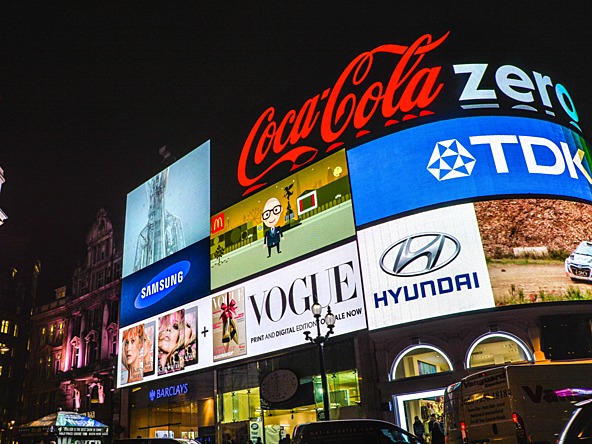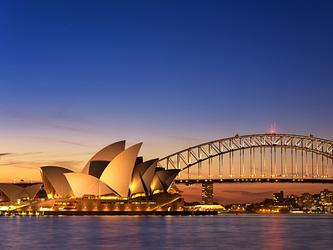Advertising up 8.8% in 2022 but slower growth ahead

The figures, however, showed that UK advertising spend fell by 5.8% to a total of £8.6bn between October and December 2022, the first time spend had decreased during a fourth quarter since 2009.
Online advertising accounted for 75.1% of total UK spend last year and grew 30.1% in the first half of 2022, before falling 5.4% in the second half.
As a result, total UK advertising spend growth in the first half of 2022 is upwardly revised to 26.0%, while the total ad market contracted by 5.7% in the second half of the year.
The strongest growth seen in 2022 was for cinema ( 123.0%) and out-of-home (OOH) ( 31.1%), both of which continued their recovery from Covid-19.
Last year also saw 15.4% year-on-year growth in broadcaster video-on-demand (BVOD), while paid search grew by 12.7%.
When reviewed by industry, advertising growth was led by services, such as entertainment, media and travel, and industrial, such as business, property and telecoms products.
Revised forecasts also suggest minimal growth of 0.5% to £35bn in 2023, before a 3.9% rise in 2024 to a total of £36.3bn.
The AA and Warc said that 2023 projections have been downgraded from the previous forecast published in January 2023 due to signs that the downturn recorded in the latter half of 2022 has continued into the first half of 2023.
Forecasts for the coming year show reduced growth expectations for nearly all sectors of advertising with the impact of high inflation, muted growth and talent shortages being felt across the industry.
The UK remains the third-largest advertising market in the world, at a value of $41.5bn, and saw the third-fastest growth rate of the top ten markets in 2022, behind only Brazil (+9.7%) and Australia (+9.4%).
Projections from Warc, however, show that the UK is forecast to post the slowest growth among the top 10 advertising markets this year.
Stephen Woodford, chief executive at the AA, said: “These figures reflect the broader macro-economic environment, with a cautious outlook as the UK economy narrowly avoids recession, but shows very little signs of real growth.
“Advertising investment is an important barometer of business performance and confidence in the economic outlook.”
Annette King, chair at the AA, said: “It’s clear from these figures that the UK needs a strong plan for growth, one that capitalises on the advertising industry’s talent to help businesses innovate and compete, and support jobs and livelihoods up and down the country.
“At the same time, we need to address the talent shortages faced by our industry – for example, working with government to increase flexibility in apprenticeships, and answering the demand for digital skills and expertise which will equip our workforce for the future.”
James McDonald, director of data, intelligence and forecasting at Warc, said: “One in every 202 UK companies entered liquidation in 2022 – the highest rate in seven years – and it is unsurprising to see these pressures reflected to some degree within advertising trade.
“Trading conditions are not expected to improve until the second half this year, with economic activity and advertising investment both largely flat during 2023 as a whole.
“The outlook is set to improve next year, however, as the economy returns to growth, inflation falls nearer to the government’s 2% target and consumer confidence lifts, though advertising spend is still predicted to rise below its long-term average in 2024.”
Reaction:
Jem Lloyd-Williams, chief executive, Mindshare UK
As an industry, advertising has weathered three years of turbulence pretty well. This report says to me there’s light at the end of the tunnel.
Media agencies and advertisers have limited control over the wider economy but ensuring we have the right training, tools, and internal structure we can control, as well as attracting and retaining the right talent. We need to remain focused on building a talent pipeline and arming our people with the skills required to support growth for our clients both now and in the future.
Nicole Lonsdale, chief client officer, Kinetic UK
Attributing the strong growth in OOH to bouncing back from the Covid-19 pandemic only tells one part of the story. Sustained investment in new technology and data meant OOH was well placed to weather national lockdowns and then adapt at pace to reach the huge audiences that OOH commands as work and travel behaviour resumed in the immediate aftermath of the pandemic.
Far from simply recovering, OOH is thriving and it’s no surprise to see the sector forecast to out-perform the wider industry in 2023. In fact, our predictions are that this growth will be larger than originally forecast.
Niall Moody, chief revenue officer, Nano Interactive
While it’s encouraging to see digital ad spend rise in spite of the cost-of-living crisis, we also know acquisition costs are being hit by rising inflation and challenges using personal data to target people online. This trend shows no signs of slowing with growing consumer data privacy concerns, continued changes in data usage from tech giants and government regulations.
As a result, huge swathes of people are now ‘unaddressable’ via cookies, profiling and other people-based methods. This is reducing the scale and effectiveness of online advertising just as marketers are coming under even more pressure to deliver results.
In 2023, you no longer need to know who someone is to deliver effective advertising online. Brands and advertisers who embrace new targeting models free of personal identifiers will be well placed to navigate this increasing signal decline and futureproof their campaigns.
Allan Blair, head of strategy Europe Middle East and Africa, VaynerMedia
Yes, budgets are squeezed. But we fundamentally believe that agencies need to stop the art of selling creative ideas and acting like high-priced consultancies before shipping them off to production studios or other departments within their business. That’s why work is so expensive. And it’s why bringing creative, strategy and media together can create enormous cost efficiencies.
Finally, it’s time for our industry to accept there isn’t a lack of talent out there. If we want a more diverse industry, we need to start hiring people from all kinds of backgrounds, disciplines and other sectors, rather than panicking that Oxbridge educated folks don’t want a job in advertising.
Alex Charkham, chief strategy officer, Fuse
These rollercoaster economics prove how vital it is for brands to have a robust plan set in place, so that spend can be maintained and marketing and advertising strategies can remain consistent.
There are mixed fortunes depending on the media but we’ve seen sport and entertainment thrive. It’s hardly surprising that we’re continuing to see year-on-year growth and improvement in advertising post Covid-19 as brands are following the fans and consumers who are looking to get back to the level of pre-Covid in-person events.
Bhavin Balvantrai, chief market analyst, Omnicom Media Group UK
UK advertising continues to show its resilience in the face of macro headwinds and directionally we are heading towards growth. Media is increasing in complexity, and agency expertise in navigating that complexity becomes even more crucial for brands when budgets need to work harder.
The pressure on advertising budgets means that there is a renewed focus on measurement and accountability to ensure that campaigns are delivering the best outcomes. Those companies that are able to navigate the current complex data environment, matching, integrating and executing against customer, retail, third party, and online and offline data sources are those best placed for future success.
Jamie Ray, co-founder, Buttermilk
In light of high inflation and an ongoing cost-of-living crisis, brands should be looking for clever ways of investing their money. Influencer marketing not only requires a lower investment than typical advertising methods, but it also represents a more cost-effective route to tackling the entire marketing funnel; creators are able to generate awareness, engagement and conversion via a singular piece of content.

We hope you enjoyed this article.
Research Live is published by MRS.
The Market Research Society (MRS) exists to promote and protect the research sector, showcasing how research delivers impact for businesses and government.
Members of MRS enjoy many benefits including tailoured policy guidance, discounts on training and conferences, and access to member-only content.
For example, there's an archive of winning case studies from over a decade of MRS Awards.
Find out more about the benefits of joining MRS here.














0 Comments